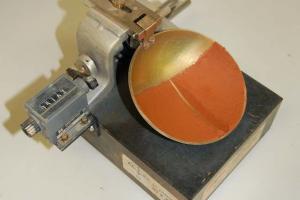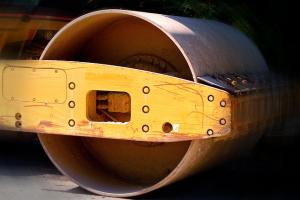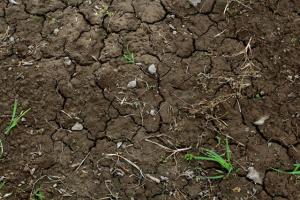To Determine Moisture Content of Soil By Oven Drying Method

(AASHTO DESIGNATION: T-265
ASTM D-2216-90)
The moisture content of soil determination is a routine laboratory procedure. ASTM has designated it with a Standard, ASTM D-2216-90 which can be found in “ASTM Standards vol. 4.08”, and also AASHTO T-265, found under “AASHTO Materials: Part II: Tests”. This is a laboratory procedure to determine the amount of water Ww present in a quantity of soil in terms of its dry weight Ws. The water content w is usually expressed in percent.

Although it is a simple experiment to perform, there are several sources of error that can occur in the experiment to determine the moisture content of soil. The most significant is the oven temperature. Many soil-forming minerals are hydrous, meaning they contain water within their crystal structures. Normally, the water content of a soil is measured by oven drying the soil at 110 ºC. This temperature is used because it is high enough to evaporate all the water present in the pore spaces of the soil but is not so large that it drives water out of the structure of most minerals.
Other sources of error include: the time period used for drying the soil, the sample size, and weighing errors.
Apparatus:
- Three to five moisture cans (tin or aluminum) with their lids;
- Temperature controlled oven (a forced-draft type). The oven should be kept at a temperature of 110 ± 5°C;
- An electronic scale / Balance with accuracy to 0.01g
- Drying oven with accurate temperature control and temperature gauge
- Containers e.g.,tin or aluminum moisture cans with lids
- Desiccator
- Container-handling tools: gloves, tongs,or suitable holder for moving and handling hot containers after drying
- Miscellaneous: knives, spatulas, scoops, quartering cloth, sample splitters, etc.
Procedure for Determining Moisture Content of Soil:

-
Weigh each of the empty moisture cans with their lids and record their weight W1 and its number; you may have to mark it with a felt tip pen
-
Take the sample of soil (under 100 g) collected from the field and place a sample of it into a can. If you are not testing a field sample, then moisten the sample given to you (20 to 40 g) with a small amount of water and thoroughly mix it with a spatula. Place the cap on the can and, weigh and record the can with the lid and the moist soil weight W2;
-
Always use the same scale, and always check to see that they read zero;
-
Remove the lid, place it underneath the can, and put the can into the drying oven
-
Repeat these steps for the two other cans. There should be three moisture cans in the oven. The temperature of the drying oven should be kept between 105 º and 110 ºC, and the cans should remain in the oven for at least 24 hours;
-
After 12 to 18 hours (or overnight), weigh and record the new weight of the moisture can with the dried soil and its lid W3. This procedure is adequate for small amounts of soil (10 to 200 grams). Much larger soil samples may require occasional stirring so that a uniform drying takes place;
-
Remove from the oven with tongs or heat-treated loves and weigh immediately; some manuals claim that convection currents affect the result, but this writer has never found this to be true;
-
The total weight difference between W3 and W2 is the weight of the water that was evaporated from the soil. This weight loss will be then used to calculate the percentage of water content w in the soil.
-
Report the water content to the nearest 0.1 percent, but in computations w is used as a decimal quantity.
TEST SAMPLE:
Sample shall be washed and oven-dried at a temperature of 105 °C-110 °C and should conform to one of the grading in observation.
| Can (#) |
Weight of Can (W1lb) (Lb) |
Weight of Can + Moist Soil (W2lb) (lb) |
Weight of Can (W1g) (g) |
(1) Weight of Can + Moist Soil (W2g) (g) |
Weight of Can + Dry Soil (W3) (g) |
(2) Weight of Water (WW) (g) |
(3) Weight of Dry Soil (WS) (g) |
(4) Water Content (W) (%) |
(5) Error (%) |
| 1 | 0.0345 | 0.0690 | 15.65 | 31.30 | 28.9 | 2.398 | 13.251 | 18.10 | 4.97 |
| 2 | 0.0345 | 0.0625 | 15.65 | 28.35 | 26.4 | 1.950 | 10.751 | 18.13 | 4.77 |
| 3 | 0.0355 | 0.0695 | 16.10 | 31.52 | 28.9 | 2.625 | 12.797 | 20.51 | 7.71 |
| 4 | 0.0350 | 0.0635 | 15.88 | 28.80 | 26.7 | 2.103 | 10.824 | 19.43 | 2.04 |
| Average | 19.04 | 4.87 | |||||||
| Standard Deviation | 1.16 | ||||||||
Sample Calculations for Soil Water Content:
Conversion of pounds to grams = ![]()
Weight of water in Sample = ![]()
Precautions:
- The soil sample should be loosely placed in the container.
- Over heating should be avoided.
- Mass should be found carefully.
Uses and Significance:
- Moisture content of soil plays an important role in understanding the behavior of soil.
- Moisture content of soil shows the degree of compaction of soil in the field.












